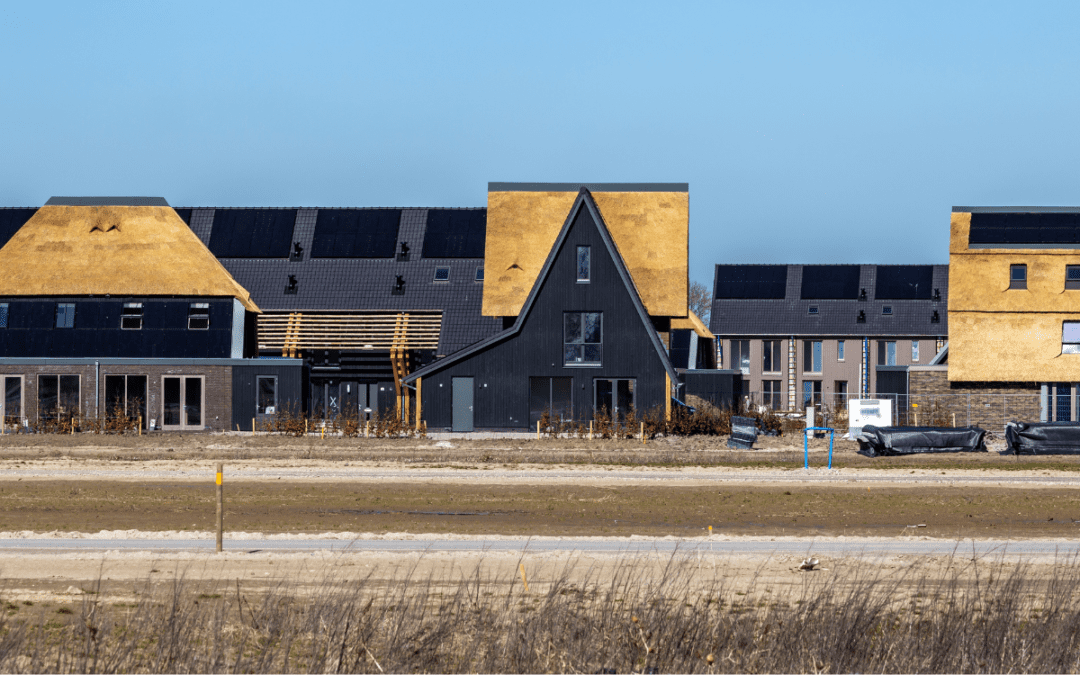British Columbia is known in equal measure for both its stunning natural landscape and burgeoning real estate market. With climate change and sustainability top of mind for many, how can developers and builders create the built world around nature rather than demanding change against it?
What’s happening on the ground
Karin Eger-Blenk, CEO of Blenk Development in Kelowna, is working towards a greener vision for the future of homes with Wilden, the largest master-planned real estate development in the Okanagan Valley. Spanning over 1,500 acres, the project sits on a mix of hillside and flat land.
“We are planning to build to minimum Step Code 4 (of the BC Energy Step Code), working strongly towards sustainability,” says Eger-Blenk.
“We want our project to blend visually with our strong natural environment. The project is very much influenced by the nature here. We want these buildings to not stand out against the mountains, but blend with it.”
Chris Ballard, former minister of environment and climate change in Ontario, is now president of Passive House Canada — the national non-profit professional association advocating for the passive house high-performance building standard.
He shares his thoughts on how the real estate market has responded to sustainability trends: do terms such as “net zero homes”, “BC Energy Step Code” and “passive housing” result in a higher volume and price point in home sales?
“Generally, I find that if I were to stop 100 people on the street and ask them about net zero or passive homes, most people wouldn’t have a clue what I was talking about,” he mentions. “I’ve had both real estate agents and builders tell me they’ve never sold (a property) because it was a ‘passive house’, but rather because of attributes such as very low energy costs, high-quality indoor air and quieter homes.”
The greenwashing problem
Developers and builders should be mindful, though, when communicating these attributes to the general public. Greenwashing, sometimes even called “green sheen”, has been a growing marketing and public relations tactic where companies claim that their products or services are environmentally friendly — even if they’re not.
“The Canadian public is sick and tired of greenwashing,” expresses Ballard.
“One of the things I’m proud to say about the passive house building standard is that it’s backed by science. It’s proven and is a nice antidote to all of the greenwashing claims that are being made in the building environment today.”
What consumers want
Paul Davidescu, principal broker at Level Up Mortgages, furthers the conversation on how the average consumer might actually respond to sustainability trends when it comes to the real estate market.
“The market cares about saving money, from a consumer standpoint. They want to make their homes a passive home, but they’re really more focused on where rates are at,” says Davidescu.
So, what should real estate developers and home builders consider when planning for their future projects?
“The buildings of the future have to have a minimal ecological footprint. It’s not just how much energy is required to build and maintain, but also what we do with it at the end of its life cycle,” says Ballard.
Making the information on sustainable practices more accessible to the general public is also a key component in marketing this type of housing in today’s real estate market.
“Beyond more government incentives, a big thing is education,” elaborates Davidescu.
Eger-Blenk encourages others to embrace a similar vision that they’ve embodied with Wilden: “We have to move as fast as possible to net zero.”
What can realtors do?
Realtors can also consider certain marketing strategies that are both educational and ethical (to avoid greenwashing) if one of their listings is a net zero or passive home.
As Ballard mentions, focusing on the benefits and attributes, such as better air quality, will initially attract a potential buyer. Appealing to emotion, like describing the comfort and security this type of home can provide, might have more of an impact than focusing on scientific or technical information first.
However, a study earlier this year from Abacus Data, a Canadian polling and market research firm based in Ottawa, further highlights Davidescu’s comment that money is the most significant factor for people when making a purchasing decision.
Sixty-five per cent of respondents indicated cost savings as one of their top three reasons to buy an energy-efficient home. Realtors should consider how to make these cost-saving benefits more visible to potential buyers, such as by providing an energy bill cost comparison chart.
With time, the social impact of reducing their carbon footprint could also be a point of great pride for a homeowner — but we first have to get their foot in the environmentally-friendly door.

Jamie (she/her) is a Writer with Real Estate Magazine, as well as Partner of a marketing agency, Burke By Burke, with her husband Eddie. She is an avid reader, self-proclaimed foodie, urban land economics enthusiast, Barry’s Tea drinker and part-time yogi. She lives, works and plays in Port Moody, BC, on the ancestral and unceded homelands of the kʷikʷəƛ̓əm (Kwikwetlem), səlilwətaɬ (Tsleil-Waututh), xʷməθkʷəy̓əm (Musqueam), Sḵwx̱wú7mesh (Squamish), q̓ic̓əy̓ (Katzie), qʼʷa:n̓ ƛʼən̓ (Kwantlen), qiqéyt (Qayqayt), and Stó:lō (Sto:lo) Peoples

















